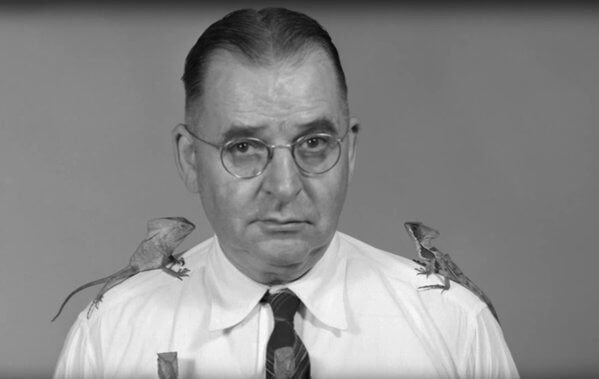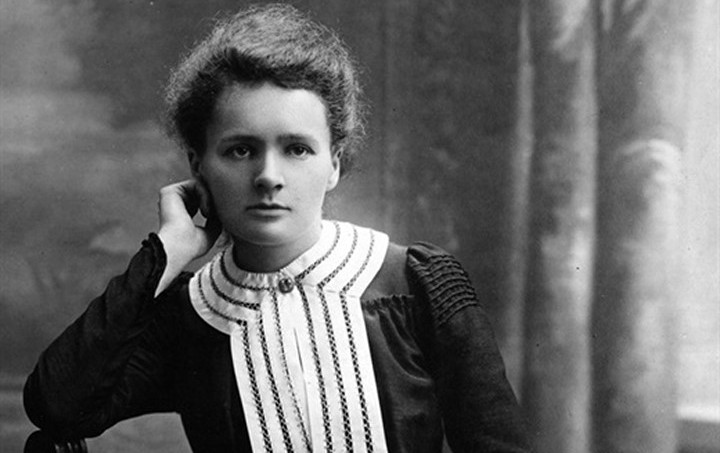Mistakes make scientists pay with life
Sometimes small errors in the research process can also take scientists' lives.
Karl P. Schmidt reptile researcher (1890-1957)

Karl P. Schmidt was bitten by snake while conducting research.(Photo: First to Know).
In 1957, Lincoln Zoo, Chicago, USA sent the reptile researcher Karl P. Schmidt at the Field Museum a snake for identification. Unfortunately, it was a small snake with deadly venom. The snake bit Schmidt while he was trying to research and classify it.
He was infected with a slow-acting toxin that caused the internal organs to bleed slowly. In the end, Schmidt could not escape because the type of antitoxin that was poisonous at the time was not born. In the last hours, he still tried to record his internal bleeding to serve later studies.
Carl Scheele chemist (1742-1786)
The first implicit principle in chemistry is not to eat everything new. But perhaps at that time, people still didn't understand the effects of chemical tasting. Scheele discovered many elements in the Periodic Table such as oxygen, tungsten and barium, before dying due to serious illnesses related to things he tasted in the lab.
Physicist, chemist Marie Curie (1867-1934)

Famous chemist Marie Curie.(Photo: Gineers Now).
Marie Curie died of radioactivity after long periods of exposure to radioactive substances during her work. Not only are she exposed to radioactive materials in the laboratory, she also carries them with people and is also frequently exposed to harmful X-rays. Her documents and legacy are still considered unsafe to touch because they emit high levels of radiation.
Haroutune physicist Krikor Daghlian (1921-1945)
During a project at Los Alamos, Daghlian carelessly dropped a tungsten carbide brick weighing 4.5 kg into the plutonium core normally used in nuclear bombs. Trying to pull out the brick but failed, he quickly used his hands to move the other bricks around the plutonium core to prevent the reaction from happening. Despite severe radiation poisoning and his death, Daghlian saved many lives.
Physicist and chemist Louis Slotin (1910-1946)

Plutoni's "demon core" plunges two scientists.(Photo: Flickr).
After Daghlian's incident, this plutonium core continued to be used at Los Alamos and the second caused an accident. At that time, Louis Slotin used a screwdriver instead of a normal laboratory separator to keep the plutonium core separate from the hemisphere. The hemisphere when exposed to plutonium will cause strong radiation.
Unfortunately, the screwdriver slipped and created a radioactive explosion. Slotin became radioactive and died after only 9 days. After the accident, it was called that plutonium core "demon core".
Chemist Karen Wetterhahn (1948-1997)
In 1997, Karen Wetterhahn accidentally dropped two drops of dimethylmercury on the gloved hand of latex, a type of rubber latex. She did not pay attention to it until she began to see symptoms of mercury poisoning a few weeks later.
Experts found that not all latex can waterproof dimethylmercury. After months of fighting the disease, the Wetterhahn died. However, thanks to that, scientists have improved the standards of protective equipment and made the experiments more secure.
- The most frightening mistakes of humans
- Why do we repeat mistakes?
- The reason many people are afraid to say sorry
- These 4 mistakes are small but have caused NASA to suffer a disaster, causing billions of losses
- Harm when doing many things at the same time
- Mistakes when eating can shorten life
- Na main case, how much appetite should avoid these mistakes when eating
- 10 Einstein's philosophy of life
- Common mistakes when pushing against
- The most costly mistakes ever happened in history, there are cases of tens of billions of dollars
- Three mistakes when eating breakfast make you lose life
- Mistakes are harmful to health when people often cook rice
 'Fine laughs' - Scary and painful torture in ancient times
'Fine laughs' - Scary and painful torture in ancient times The sequence of numbers 142857 of the Egyptian pyramids is known as the strangest number in the world - Why?
The sequence of numbers 142857 of the Egyptian pyramids is known as the strangest number in the world - Why? Miracle behind the world's largest stone Buddha statue
Miracle behind the world's largest stone Buddha statue What is alum?
What is alum?